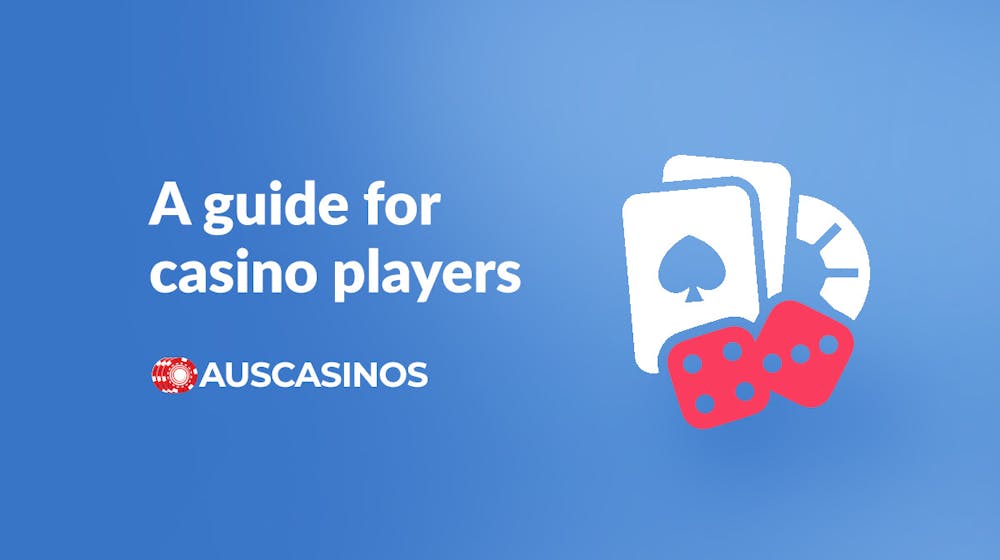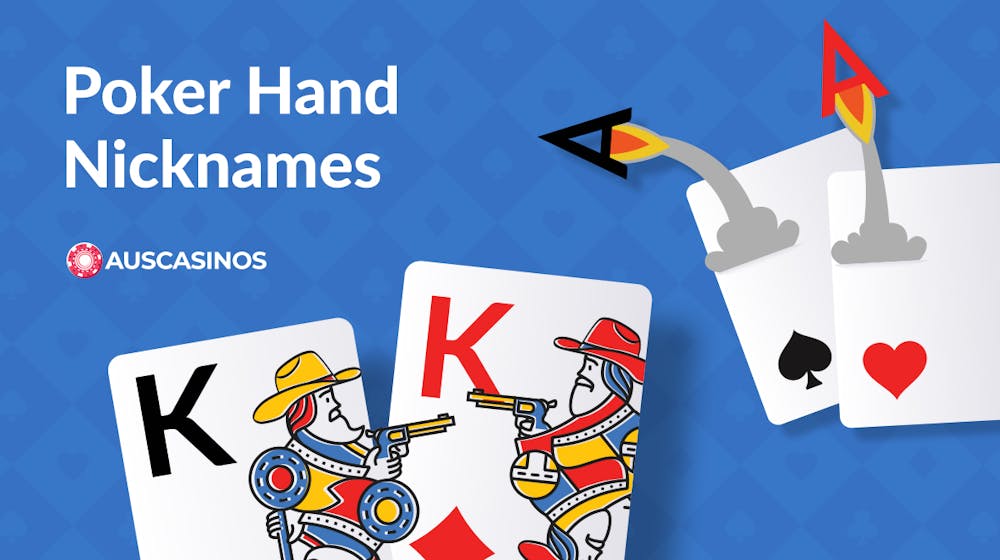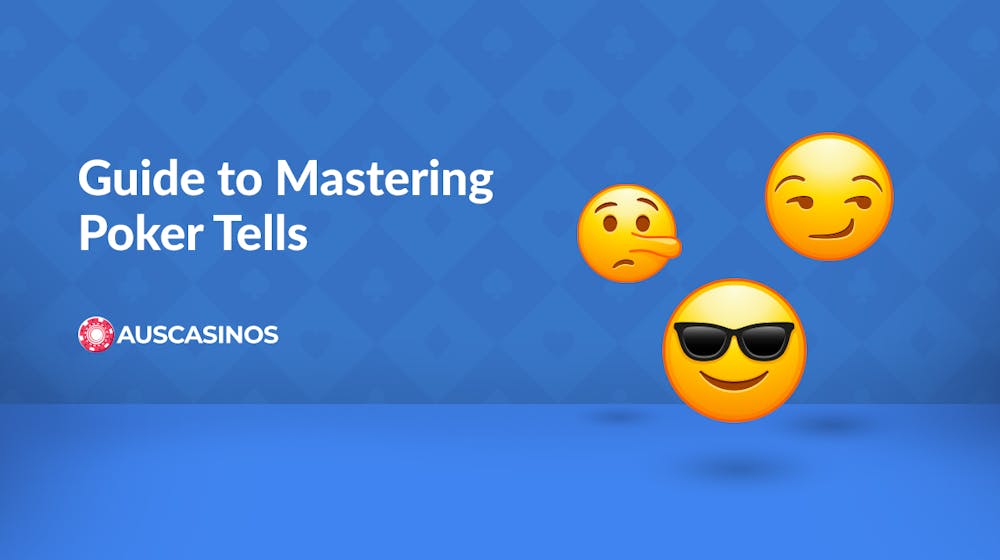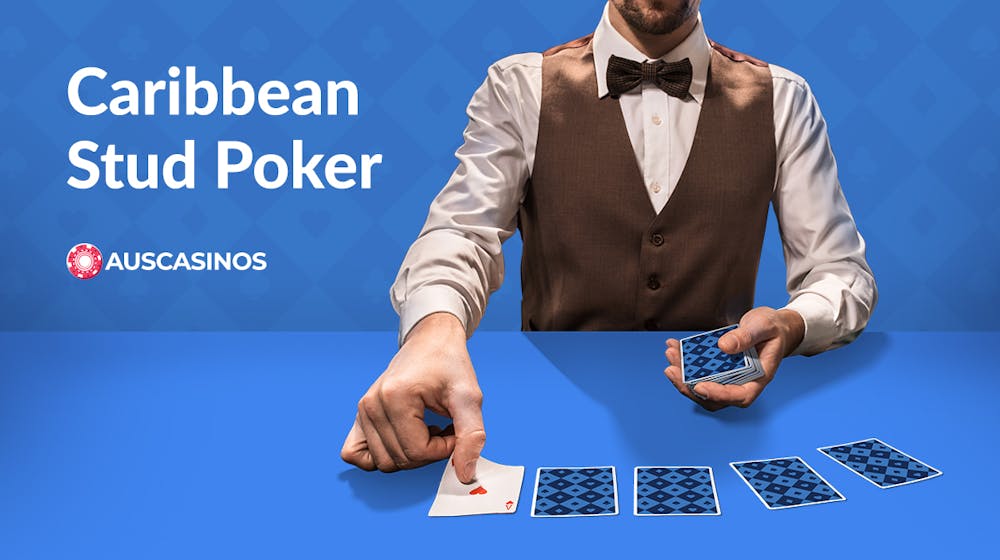Master Poker Strategy: Poker Tips, Tactics & How to Win

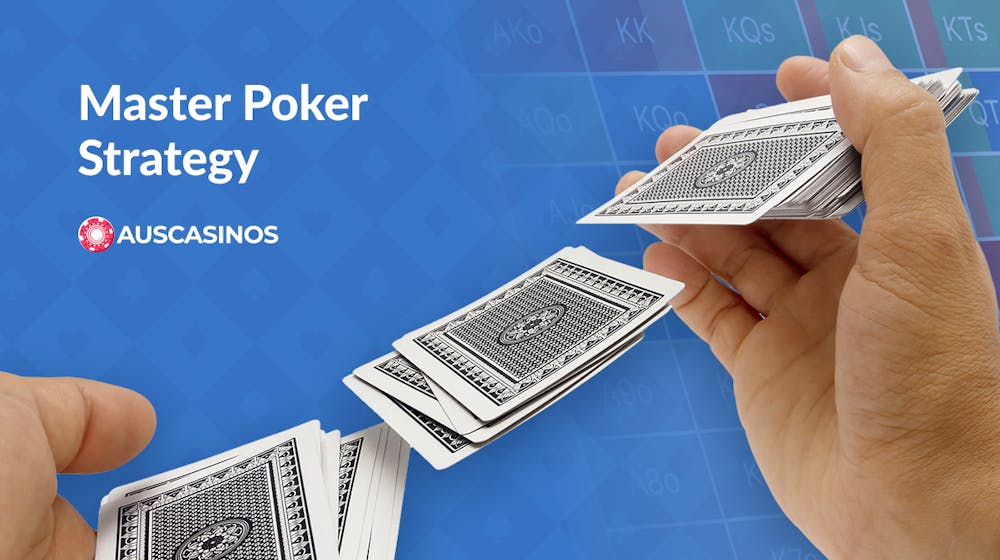
Employing an effective poker strategy is the surest way to win at poker in the long run. Being confident in your poker strategy means you will not rely on luck, which is what distinguishes poker pros from amateurs.
In this guide we will arm you with poker tips, provide you with a clear poker guide, explore old and new poker strategies and poker theory, all of which will help you win at poker. If you already know the basic poker strategy concepts, you can skip the poker for beginners parts of this guide, and plunge into the Deep Dive strategy sections.
Key Takeaways
- Bankroll Management: Keep a dedicated bankroll to manage risk and avoid going broke.
- Table Selection: Choose tables with less skilled opponents for better chances of winning.
- Hand Selection: Play only strong hands and avoid weak ones to minimise risk.
- Discipline: Stick to your strategy and avoid emotional decisions.
- Study the Game: Continuously improve through books, videos, and analysis.
- Memorise Poker Odds: Know the odds to make better decisions.
- Practice: Play regularly to refine your skills.
- Watch Pros: Learn from experienced players’ strategies.
- Use Poker Software: Track your play and analyze hand histories.
- Positional Awareness: Play more hands in late position to maximise advantage.
Top 12 Beginner Poker Strategies To Help Your Game
To get started in our mission to help you become a winning poker player, we have put together our 12 essential poker tactics and strategy tips. No poker strategy can guarantee a win every time – even the best players lose (usually on river!) – but these tips will improve your game.
Top 12 Tips on how to get better at poker:
1. Bankroll Management
2. Table Selection
3. Hand Selection
4. Discipline
5. Study Poker
6. Memorize Poker Odds
7. Practice, Practice, Practice!.
8. Watch the Poker Pros
9. Poker Software
10. Replay Poker Hands
11. Positional Awareness
12. Understand and Control Tilt
Advanced Poker Strategy
Understand Player Types
Player profiling is essential for adjusting your strategy in real-time and exploiting opponents. The four main player types are Tight, Loose, Aggressive, and Passive. By understanding these types, you can adapt your play to counter their tendencies.
| Player Type | Description | Action Tip |
|---|---|---|
| Tight Players | Only play premium hands and fold often, waiting for strong hands. | Bluff more often on dry flops. Be cautious if they call or raise. |
| Loose Players | Play a wide range of hands, often calling with marginal holdings. | Value bet often. They will call with weaker hands. Bluff less. |
| Aggressive Players | Bet and raise frequently, putting pressure on opponents. | Trap with strong hands. Call or check-raise if you suspect a bluff. |
| Passive Players | Avoid confrontation, preferring to check and call instead of raising. | Bet aggressively. You can often win pots without the best hand. |
Bluff and Semi-Bluff to Win More Pots
Bluffing is a powerful tool, but it requires timing and understanding of when your opponents are likely to fold. Semi-bluffing is an advanced technique where you bet with a drawing hand that has potential to improve, allowing you to win either by forcing folds or hitting your hand.
When and Why to Bluff
Bluffing should be used when you believe your opponent is weak or unlikely to call. This typically works best on dry boards where it’s hard for them to have a strong hand. Bluff more when your opponent has shown weakness, such as checking multiple times, or when you're in late position and can control the action.
Using Semi-Bluffs to Build Pots
A semi-bluff is when you bet with a hand that isn’t made but has the potential to become strong (e.g., flush or straight draws). Semi-bluff in situations where even if you’re called, you have outs to improve your hand. This allows you to build the pot when you hit your draw and gives you fold equity when opponents decide to lay down their hand.
Buffing Tips From The Pros
- Bluff in Late Position: You have more information about your opponents' actions, making it easier to pull off a successful bluff.
- Target Weak Players: Bluff against opponents who fold often, as they're more likely to give up on the hand.
- Watch for Weakness: Bluff when your opponents show signs of weakness, like checking or calling multiple times without raising.
- Bluff on Dry Boards: Boards with few draw possibilities (e.g., low and disconnected cards) are ideal for bluffing since opponents are less likely to connect.
- Semi-Bluff When Drawing: Bluff with a hand that has potential to improve (e.g., flush or straight draws), so you have outs if you're called.
- Use a Consistent Betting Pattern: Make your bluffs resemble your value bets in size and timing, so opponents can't easily spot the difference.
Use Position to Control the Game
Your position at the table is one of the biggest factors in poker strategy. The later your position, the more information you have, and the more control you have over how the hand plays out. Here's how to take advantage of this:

| Position | Strategy | Tip |
|---|---|---|
| Late Position (Button/Cutoff) | Play more hands and bet aggressively. Bluff if others check. | Bet big with strong hands, steal pots with weak ones. |
| Middle Position | Play cautiously but raise with good hands. React to early bets. | Attack weak bets and take control of the pot. |
| Early Position | Play tight with strong hands. Avoid bluffing and play safe. | Stick to premium hands and don't overplay. |
| Floating in Position | Call on the flop, then bluff if the aggressive player slows down. | Use floating to exploit their aggression and win the pot. |
Fun poker fact: The poker player Annette Obrestad famously won an 180 person online poker tournament without looking at her hole cards. She did this to demonstrate how poker was as much about position as the cards dealt. Annette Obrestad still holds the record of the youngest person to win a World Series of Poker bracelet.
Build and Read Hand Ranges Like a Pro
Building hand ranges helps you think in terms of possibilities rather than specific hands, which is key to improving your reads and decision-making in poker.
Building Your Own Ranges
Instead of thinking in terms of one specific hand, assign yourself a range of hands that you could be holding based on your position and the betting action. Practice narrowing down your own range by considering how your opponents perceive your actions. For example, if you raise from early position, your perceived range is stronger than if you raise from the button.
Narrowing Down Opponent’s Range
As the hand progresses, you can narrow down your opponent’s possible hands based on their actions. Pay attention to whether your opponent calls, raises, or folds in different situations to help narrow their range. For example, a pre-flop raiser who checks on the flop might have missed the board, whereas a player who bets every street is more likely to have a strong hand.
Bet for Maximum Value
Bet sizing is critical to extracting maximum value from your strong hands while keeping your bluffs believable. Adjusting your bet sizes based on the situation and player tendencies is a hallmark of advanced poker strategy.
Adjusting Bet Sizing to Situation
Larger bets can put more pressure on your opponents, while smaller bets can induce calls from weaker hands. Against calling stations (loose players who love to call), make larger value bets when you have strong hands. Against aggressive opponents, smaller bets may be more effective for trapping.
Using Over-Bets, Under-Bets, and Value Bets
Over-betting (betting more than the size of the pot) can force opponents to make difficult decisions, while under-betting can induce raises or calls from weaker hands. Use over-bets when your opponent is unlikely to have a strong hand and is playing cautiously. Under-bet to entice weak players into calling with marginal hands.
Use Pot Odds and EV to Make Winning Decisions
Understanding pot odds and Expected Value (EV) helps you make mathematically sound decisions, even in high-pressure situations.
Calculating Implied Odds and Reverse Implied Odds
Implied odds factor in the potential winnings on future streets, while reverse implied odds consider the possibility that you’re drawing to a hand that could still lose. Use implied odds when chasing draws against opponents likely to pay off big bets if you hit your hand. Avoid situations with reverse implied odds, where even if you hit, you could still lose to a better hand.
Incorporating EV into Decision-Making
EV measures how much a play will win or lose in the long run. Positive EV means the decision will be profitable over time, while negative EV means it will cost you money. Focus on making +EV decisions in every hand. For example, if you calculate that a call has a positive EV due to the pot size and your odds of improving, it’s a profitable decision even if you lose in that specific instance.

Exploit Your Opponents’ Weaknesses
Spotting leaks in your opponents’ games allows you to develop counter-strategies that exploit their mistakes.
Common Weaknesses to Exploit
Look for players who play too passively, over-bluff, or call too often with marginal hands. Against over-aggressive players, tighten up your hand range and allow them to bet into your strong hands. Against passive players, bet more aggressively to steal pots when they’re likely to fold.
Counter-Strategies to Combat Mistakes
For example, if a player constantly folds to 3-bets, start 3-betting more frequently to exploit this leak. Develop a strategy based on your opponent’s tendencies. If they rarely defend their blinds, raise them more often to steal the pot uncontested.
GTO (Game Theory Optimal) vs. Exploitative Play
Understanding the difference between Game Theory Optimal (GTO) play and exploitative play helps you navigate different opponents.
Introduction to GTO Strategy
GTO involves playing a mathematically balanced strategy that is unexploitable in the long run. However, it’s difficult to master, and most players benefit more from an exploitative approach. Start learning GTO concepts like balanced ranges and betting frequencies, but don’t rely on GTO entirely. Adjust your play based on how opponents are playing.
When to Deviate from GTO
Exploitative play allows you to adjust your strategy to exploit opponents' weaknesses. GTO works best against skilled opponents, while exploitative play works better against weaker players. Deviate from GTO when you notice patterns in your opponents’ play, such as folding too often to bluffs or calling too frequently with weak hands. Use this information to exploit their tendencies.
Strategy Deep Dive: Understanding Poker Hand Range Strategy
Hand range strategy in poker is key for predicting opponents' likely hands, helping you make better decisions. Instead of focusing on a specific hand, you evaluate a range of hands an opponent might hold based on their actions.
Here's a Top 10 List for Hand Range Strategy:
- Narrow Opponent’s Hand Range Post-Flop: Adjust their possible hands based on their actions.
- Use VPIP/PFR Stats: Estimate the opponent’s pre-flop range using these stats.
- Position Matters: Opponents play tighter ranges in early positions.
- Use Equity Tools: Tools like Equilab help calculate hand range equity.
- Player Type Adjustments: Tailor ranges to aggressive or passive playstyles.
- Consider Board Texture: Different boards impact how ranges interact.
- Practice Range Reading: Repetition improves accuracy.
- Reevaluate at Each Action: Constantly refine ranges during play.
- Avoid Over-Reliance on One Range: Stay flexible with adjustments.
- Exploit Weak Ranges: Punish loose or passive players by targeting weak ranges.
This method sharpens your reading and decision-making skills.
Strategy Deep Dive: Understanding Poker Table Position
Understanding poker positions is crucial to long term success and profitability. Leveraging the advantages of being On the Button, or exploiting the weakness of other players in less favourable positions, will make all the difference to a poker bankroll.
Here are the positions at a 9-seat full ring game of poker. Each position has its own unique advantages and disadvantages, which we have summarised below:
- Hijack: The hijack position at the table is a middle-late position, where you may be able to take advantage by raising to steal the blinds, if your opponents in front are conservative players.
- Cutoff: For many players, the cutoff position is where you can get creative, as you can exert pressure on the Button, Small Blind and Big Blind, if the action has folded around.
- Button: Traditionally, the Button is the strongest position in poker. After the flop, you will get to see how other players bet, before making a decision.
- Small Blind: The small blind means that you will have invested some money into the pot. If the action has folded around to the blinds, the small blind will often raise the big blind, to try and steal the pot.
- Big Blind: Being in the big blind, you are in a defensive position. If players raise you, you have to decide whether to defend with weaker hands, or relinquish the big blind and wait for stronger opportunities.
- Under the gun: UTG is the least favourable of positions at the poker table, as you have no knowledge of your opponent’s strengths. Raising under the gun usually means having a premium hand.
- Middle Positions 1, 2 and 3: Having a middle position in poker, especially in a 9-seat ring game, means that you will be acting without much information about your opponent’s strengths or weaknesses, unless there has been betting action from the early positions.

Top 5 Ways to Take Advantage of Position:
- Play more hands in a late position: You see how others act first.
- Tighten up early: Strong hands only in early positions.
- Steal blinds: Raise more in late position.
- Pressure opponents: Exploit those out of position.
- Control pot size: Use your position to dictate bets.
- Strategy Deep Dive: Poker bankroll management
Strategy Deep Dive: Bankroll Management:
The difference between winning poker players and losing players has as much to do with bankroll management as skill. Here is a guide to managing your bankroll:
- Set Aside a Dedicated Bankroll: Keep poker money separate from personal funds.
- Follow Buy-in Guidelines: Stick to proper buy-ins (e.g., 30-50 for cash games).
- Adjust for Game Type: Different games require different bankroll sizes.
- Avoid Going All-In: Never risk your entire bankroll in one session.
- Move Down When Necessary: Drop stakes during downswing.
- Track Your Play: Keep detailed records of wins and losses.
- Stay Disciplined: Avoid chasing losses or overestimating your bankroll.
Let’s use an example of having a $500 bankroll:
| Poker Game | Buy-in | Percentage | Bankroll |
|---|---|---|---|
| Cash Game | $25 | 5% | $500 |
| Multi-Table Tournament | $12.5> | >2.5% | $500 |
| Sit and Go | $12.5 | 2.5% | $500 |
Conclusion
Mastering poker strategy requires a blend of disciplined bankroll management, careful table and hand selection, and a deep understanding of positional dynamics. By studying poker theory, practicing regularly, and using tools like solvers and trackers for post-game analysis, you can sharpen your skills and increase your chances of success. Remember, poker is not just about the cards but also about making informed, strategic decisions at every turn. With consistent effort and a commitment, you can elevate your game and learn how to play poker like a pro - and you may even become a poker pro!
Poker Strategy FAQ

Emily is our seasoned content writer. She writes easy to read and helpful game guides, so you can quickly understand the rules of each game and get some useful tips that can help boost your chances of winning.
Read more about the author
